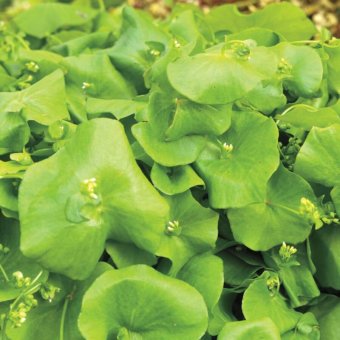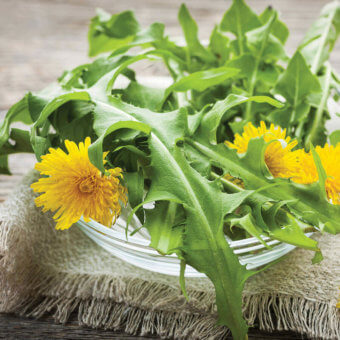Most of the vegetables we eat on a regular basis are cultivated adaptations from some older source. A good example is broccoli, which is the very same species of plant as cabbage, cauliflower, Brussels sprouts, kale, and kohlrabi. All of these were bred over time from a common ancestor. The modern tomato, even in its various heirloom forms, is highly developed through generations of breeding from its original wild form. Plant breeding is in no way a bad thing — rather, it has given us a wealth of variety from a handful of sources. There are a minimum of 296 varieties of peas being grown for food in the world, and more than 4,000 types of potato.
One of the basic principles of cultivating good food crops is the removal of all plants that would compete for space, nutrients, light, and moisture: Weeds. These plants grow quickly and seem to spread like viruses. They can easily take over a neglected patch of soil in no time. But how many of these end up in the compost heap rather than the salad bowl? How many of these garden foes are actually edible, nutritious, versatile, and delicious? It turns out that lots of them are. Growing edible weeds can be easy and rewarding.
But why would a gardener knowingly plant a row of weed seeds? The main reason is that, like any other crop, a row of dandelions or chickweed can be nurtured and cultivated to produce better flavour, succulence, vigour, and nutrient density. Thinking of these plants as crops turns the tables. They can be pampered, watered, fertilized — even weeded. They can also be easily controlled when they are grown in this intentional, managed way.
Consider the following weedy plants as food crops, and try a couple in your next vegetable garden. Amazingly, all of these are available as certified organic seeds.

Chickweed – It even has the word ‘weed’ in its name! Packed with vitamins, minerals, and protein, this is one of the tastiest and most succulent of all the wild greens. Take three cuttings or more from each sowing or use it as a cover crop — it breaks down as quickly as buckwheat to enrich the soil. Add a handful to salads or try some in a sandwich. Chickweed has a very mild flavour, so it should only be cooked briefly, but it’s probably better raw. It grows very well in containers, too.

Claytonia (Miner’s Lettuce) – Known also as Winter Purslane due to the succulence of its leaves and stems, this native west coast weed is actually sweet tasting, not tart like true purslane. It has such wonderful flavour that it really adds to salad mixes. Claytonia is quite cold hardy, which makes it one of the top candidates for winter harvest greens.

Dandelion – This plant hardly needs a description. Cultivated in good garden soil with a bit of balanced organic fertilizer, dandelions are delectable and nutritious. Eat the young leaves raw, or cook the mature leaves like spinach. Scatter the edible flower petals over salad, or collect the unopened buds (a lot of them are needed) for making dandelion wine. The bitter leaves are a rich source of iron and vitamins A, B1, B2, and C.

Goosefoot – A tall cousin of lamb’s quarters, this fast growing plant has large edible leaves that taste great and are high in fibre. Use the young, mineral-rich, magenta-tipped leaves raw in salad mixes. Save some of the high protein seeds for making bread or feeding wild birds. Harvest thoroughly, as Giant Goosefoot can reach 2m (6’) tall or more.

Huauzontle – A close cousin of Goosefoot! The close relationship between this ancient meso-American crop and quinoa are obvious as soon as it blooms. The seed head that follows produces bowls full of edible grains, but without the bitter saponin coating found on quinoa seeds. The immature leaves of huauzaontle are also edible.

Orach – This little known relative of quinoa produces bright fuchsia, succulent, tasty leaves unlike any other salad leaf. Its subtle, salty flavour earns it the colloquial name Saltbush. The eye-catching leaves simply pop in salad mixes. This variety is descended from wild mountain spinach originally growing in Montana.

Purslane – This hot weather plant produces thick, succulent, green leaves that add a light lemony crunch to salads. Cultivated purslane eaves are much larger than the wild type and the plant grows upright, not prostrate. It contains more Omega-3 fatty acids than any other vegetable. It can be cut almost to the ground, but keep two leaves at the base for re-growth.

